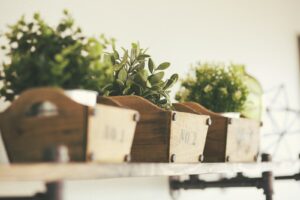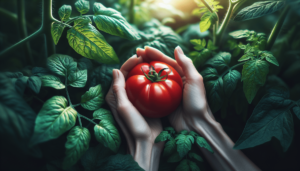Regarding our daily meals, we know that vegetables are vital in providing essential nutrients and keeping us healthy. But have you ever found yourself standing in the produce aisle, utterly perplexed about which vegetables to pick? With so many options and varying degrees of freshness, it can be quite a challenge. In this article, we will unveil a few simple tips and tricks to help you choose the freshest vegetables, ensuring that every bite you take has flavor and goodness.
How to Choose the Freshest Vegetables
We all want to bring home the freshest and most flavorful produce when buying vegetables. Whether we’re making a salad, stir-fry, or a side dish, the quality of our vegetables can significantly affect the taste and overall enjoyment of our meals. So, how can we ensure we select the freshest vegetables every time? Let’s explore some simple tips and guidelines to help us choose the best produce.
Appearance
The appearance of vegetables can provide valuable clues about their freshness and quality. As we peruse the aisles of the grocery store or farmers market, we should look for vibrant and visually appealing vegetables. Bright and vibrant colors are often signs of freshness, indicating that the vegetables are still at their peak. On the other hand, we should avoid vegetables that appear dull or have blemishes, as these may be indicators of age or damage.
Additionally, it is essential to pay attention to the leaves or stems of the vegetables. Fresh vegetables should have crisp and green leaves or stems. Wilted or yellowing leaves can signal that the vegetables have been sitting too long and may not be as fresh as we’d like. Therefore, selecting vegetables with vibrant colors and fresh-looking leaves or stems is a great way to ensure we choose the freshest produce.
Texture
The texture of vegetables can also tell us a lot about their freshness. When we’re selecting vegetables, it’s essential to feel for firmness. We should gently squeeze or press on the vegetables to check if they are firm and solid. Avoid vegetables that feel soft or mushy, as these could be indications of spoilage or dehydration. On the other hand, vegetables that are firm and crisp are more likely to be fresh and full of flavor.
Certain vegetables, such as lettuce or cucumbers, should have a specific crispness. When selecting these vegetables, we can test their crispness by gently applying pressure and ensuring they snap back. This characteristic indicates that fresh vegetables will provide a pleasant crunch when consumed. Therefore, paying attention to the texture of the vegetables by feeling firmness and crispness will help us select the freshest produce.
Size
The size of vegetables can also influence their taste and texture. When it comes to selecting the freshest vegetables, it is generally recommended to choose those that are of medium size. Vegetables that are too small may not have reached their full flavor potential, while those that are too large can be woody or tough. Moreover, more miniature vegetables tend to be sweeter and more tender, making them more enjoyable.
While size is not the sole determinant of freshness, opting for medium-sized vegetables is a good rule of thumb to ensure a pleasant eating experience. However, it’s important to note that this guideline may vary depending on the specific vegetable. For instance, cherry tomatoes are often sweeter when smaller, while larger bell peppers may offer a more robust flavor. Therefore, understanding the optimal size for different vegetables will help us choose the freshest produce for our meals.
Smell
One of our most powerful senses, smell, can help us determine the freshness of vegetables. Simply sniffing the produce can often detect whether it is fresh or not. Ideally, fresh vegetables should have a pleasant and earthy smell, indicating that they are still at their peak and have not begun to spoil.
However, if we detect any unpleasant or rotten odors when sniffing the vegetables, it’s best to avoid them. Foul smells usually indicate decay or bacterial growth, and consuming such vegetables can pose health risks. On the other hand, certain vegetables like onions or garlic should have a distinct aroma that further confirms their freshness. So, sniffing the vegetables can provide valuable information about their quality and help us select the freshest produce.
Stem or Leaves
Inspecting the condition of the stems or leaves of vegetables is another valuable technique for assessing their freshness. We should avoid vegetables with wilted or yellowing leaves, as these are indicators that they may have been sitting for an extended period. Fresh vegetables should have crisp and green stems or leaves that appear vibrant and full of life.
By selecting vegetables with healthy-looking stems or leaves, we can be more confident that we are choosing fresh and flavorful produce. Additionally, vibrant leaves or stems often indicate that the vegetables are rich in nutrients, making them a healthier option for our meals. Therefore, paying attention to the condition of the stems or leaves is a simple but effective strategy to select the freshest vegetables.
Wrinkles or Bruises
Wrinkles or bruises on vegetables can indicate that the produce is no longer fresh. Examining the vegetables, we should look for smooth and wrinkle-free skin. Wrinkles or bruises may indicate the vegetable is old, dehydrated, or damaged.
While minor imperfections are normal and do not necessarily mean the vegetable is spoiled, severe wrinkles or bruises should be avoided. A vegetable with excessive wrinkling may have lost its moisture content, affecting its taste and texture. Similarly, vegetables with significant bruising may have internal damage that could affect their quality. Therefore, selecting vegetables with smooth and unblemished skin is a good practice to ensure freshness and taste.
Seasonality
Choosing vegetables that are in season is a great way to support local farmers and reduce our ecological footprint. It also ensures that we’re selecting the freshest produce available. Seasonal vegetables are typically harvested closer to our location, reducing the time between harvest and consumption. This means they are likely to retain more nutrients, flavor, and freshness than vegetables traveling long distances.
We can consult seasonal produce guides or ask our local farmers or grocers to determine which vegetables are in season. By selecting seasonal vegetables, we can savor the flavors and textures at their peak and genuinely appreciate the bounties of each season. Therefore, incorporating seasonality into our vegetable selection process will help us enjoy the freshest and most flavorful produce year-round.
Organic or Conventional
Another consideration when choosing vegetables is whether to opt for organic or conventional options. Organic vegetables are grown without synthetic fertilizers, pesticides, or genetically modified organisms (GMOs). They are often considered healthier as they reduce exposure to potentially harmful chemicals.
We should check for organic certifications or labels to ensure their authenticity when selecting organic vegetables. On the other hand, conventional vegetables may have been treated with pesticides or chemicals during their cultivation. If we are concerned about exposure to these substances, choosing organic vegetables can give us a fresher and healthier option. Ultimately, deciding between organic and conventional vegetables depends on our preferences and health priorities.
Locally Grown
Opting for locally grown vegetables is an excellent way to support our local communities and enjoy the freshest produce. Local vegetables are often harvested closer to our location, minimizing the transportation time and ensuring they are as fresh as possible. By purchasing vegetables from local farmers, we contribute to a more sustainable food system and help reduce our ecological impact.
We can look for farmer’s markets or local produce stands in our area to find locally grown vegetables. These venues offer various seasonal and locally sourced vegetables, allowing us to connect with the people who grow our food. Shopping for locally grown vegetables will enable us to learn more about the produce and its cultivation practices and discover new and unique varieties. So, let’s support our local farmers and enjoy the freshest vegetables our communities have to offer.
Storage Conditions
Last but not least, considering the storage conditions of the vegetables in the store is crucial. Vegetables should be stored in cool, dry, and well-ventilated areas to maintain freshness and prevent spoilage. As we browse the produce section, we can take a moment to observe the storage conditions to ensure that the vegetables are being adequately cared for.
Avoid purchasing vegetables stored in overcrowded or damp areas, as this can promote bacterial growth and accelerate spoilage. Additionally, if we notice any signs of wilting or discoloration, it may indicate that the vegetables have not been stored correctly. By selecting vegetables from stores that prioritize proper storage conditions, we can increase our chances of bringing home the freshest produce to enhance our meals.
In conclusion, choosing the freshest vegetables requires attention to various factors, ranging from appearance and texture to smell and storage conditions. By selecting vegetables with vibrant colors, crisp leaves, and fresh-looking stems, we can be confident that we’re choosing produce still at its peak. Feeling firmness and checking for crispness in certain vegetables will further ensure we’re getting the freshest options available.
Considering the size, seasonality, and storage conditions of vegetables will help us select produce that is flavorful, nutritious, and of the highest quality. Opting for organic or locally grown vegetables can provide us with fresher and healthier choices. By incorporating these tips into our vegetable selection process, we can elevate our culinary experiences and savor the vibrant flavors of fresh produce in every dish. So, let’s embark on our vegetable shopping journey armed with the knowledge to choose the freshest vegetables for our tables.



